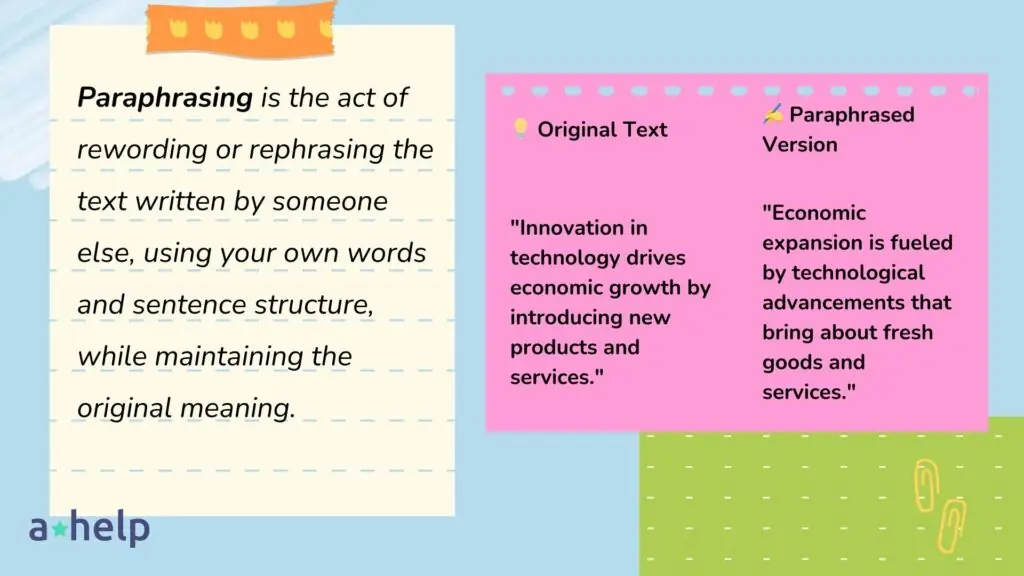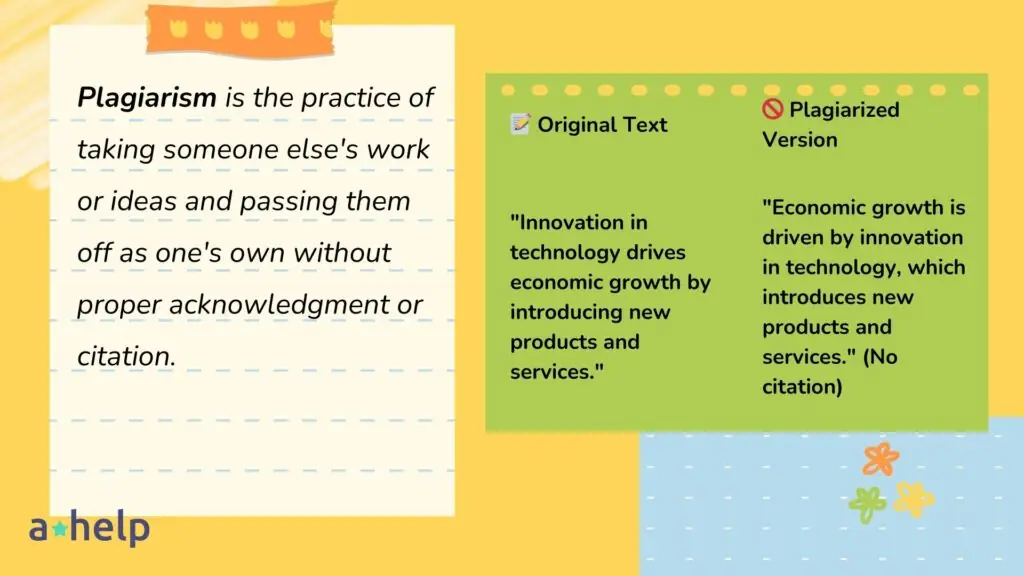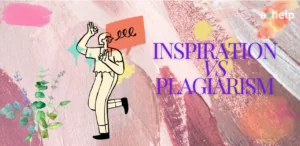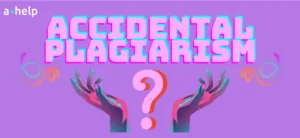The line between paraphrasing and plagiarism has become increasingly blurred. The quick and short answer is no, paraphrasing isn’t plagiarism. Paraphrasing involves rewording someone else’s ideas in your own words, while plagiarism is the process of passing off those ideas as your own without proper acknowledgment. We will further discuss what sets them apart, the importance of citation, and how to paraphrase effectively without crossing into the territory of plagiarism. Knowing the self plagiarism definition will keep you safe from accidentally plagiarizing.

✅ AI Essay Writer ✅ AI Detector ✅ Plagchecker ✅ Paraphraser
✅ Summarizer ✅ Citation Generator
How to Define Paraphrasing and Plagiarism?
It is the same case as the difference between paraphrasing and summarizing. Paraphrasing and plagiarism might seem similar at first glance, but there are clear distinctions between the two. Paraphrasing requires understanding the original text and then expressing it in your own words, along with a citation to the original source.

Plagiarism, on the other hand, involves using someone else’s work without giving them credit, and it doesn’t matter intentionally or accidentally. The intent behind paraphrasing is to use existing information to support your own ideas or arguments, not to steal credit.

Let’s take a look at how paraphrasing works with the help of examples.
Correct Paraphrasing
Proper paraphrasing means taking the original text and rewriting it in your own words, so that you keep the original meaning whilemaking significant changes in wording and sentence structure. This practice not only shows respect for the original author’s work but also demonstrates your own understanding and ability to engage with the content:
| Original Text | ✅Correctly Paraphrased Version |
|---|---|
| “The quick brown fox jumps over the lazy dog.” | “A swift, auburn fox vaults over a dormant canine.” |
| “Global warming is a significant threat to biodiversity.” | “The escalating temperatures of our planet pose a severe risk to the diversity of life forms.” |
| “Eating fruits and vegetables contributes to a healthy lifestyle.” | “A diet abundant in fruits and vegetables supports overall health and vitality.” |
| “The Great Wall of China stretches over 13,000 miles.” | “The expansive Great Wall of China spans more than 13,000 miles.” |
| “Shakespeare’s works are a testament to his genius.” | “The literary masterpieces of Shakespeare bear witness to his extraordinary intellect.” |
Incorrect paraphrasing
On the flip side, bad paraphrasing happens when the rewording is too close to the original text, without adequate citation or proper alteration in structure and vocabulary. You might want to use a plagiarism checker detector to be extra sure.
| Original Text | ❌Plagiarized Paraphrased Version |
|---|---|
| “The quick brown fox jumps over the lazy dog.” | “The quick brown fox goes over the lazy dog.” (Minor rewording without citation) |
| “Global warming is a significant threat to biodiversity.” | “Global warming poses a big threat to biodiversity.” (Slight rewording without citation) |
| “Eating fruits and vegetables contributes to a healthy lifestyle.” | “Living a healthy lifestyle involves eating fruits and vegetables.” (Reversing structure without citation) |
| “The Great Wall of China stretches over 13,000 miles.” | “The Great Wall of China is over 13,000 miles long.” (Minimal rewording without citation) |
| “Shakespeare’s works are a testament to his genius.” | “Shakespeare’s genius is shown in his works.” (Simple rewording without citation) |
Don’t plagiarize! Try our Free Plagiarism Checker just to be sure
How to Paraphrase Without Plagiarizing
The process of paraphrasing without falling into the trap of plagiarism is straightforward yet requires attention to detail. By following these steps, you can rest assured your paraphrased work is both original and respectful of the source material:
- 📖 Read and Understand: Before attempting to paraphrase, take the time to thoroughly read and comprehend the original text. It’s crucial to grasp not just the surface-level meaning but also the underlying themes and nuances. Ask yourself what the key messages are and how they relate to your work or study.
- ✍️ Reword: Armed with a deep understanding of the text, begin to express the ideas in your own unique words. We advise you to avoid simply swapping out words with synonyms; instead, think about how you would explain the concept to someone who knows nothing about the topic. This step is about internalizing the information and then articulating it in a way that reflects your voice and perspective.
- 🔄 Structure Differently: Look at the structure of the original text and then alter it significantly in your paraphrase. If the original text follows a particular order or layout, try reorganizing the points or changing the focus of the sentences. This could mean converting active sentences to passive ones, rearranging the flow of arguments, or combining and splitting sentences to convey the same points differently.
- 🔀 Use Synonyms Wisely: While synonyms can be useful in paraphrasing, it’s important to use them judiciously. Simply replacing every word with a synonym without considering context can lead to inaccuracies or awkward phrasing. Select synonyms that fit the context and maintain the original meaning. Be particularly mindful of technical terms or specific concepts where synonyms might not be appropriate.
- 📌 Cite the Source: Perhaps the most critical step in avoiding plagiarism is to properly cite the original source. Even when paraphrasing, it’s essential to give credit to the author or creator of the original ideas. This not only respects intellectual property but also strengthens your own work by showing your engagement with existing literature or research. Follow the citation style recommended for your field or by your instructor, whether it’s APA, MLA, Chicago, or another format.
By going through these detailed steps, you’ll be able to paraphrase effectively and avoid plagiarism. Yes, it takes a bit of work, but getting penalized for plagiarism is far worse than spending an hour or two perfecting your text.
FAQ
Follow us on Reddit for more insights and updates.





Comments (0)
Welcome to A*Help comments!
We’re all about debate and discussion at A*Help.
We value the diverse opinions of users, so you may find points of view that you don’t agree with. And that’s cool. However, there are certain things we’re not OK with: attempts to manipulate our data in any way, for example, or the posting of discriminative, offensive, hateful, or disparaging material.